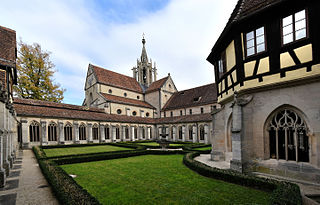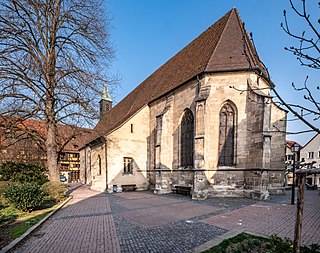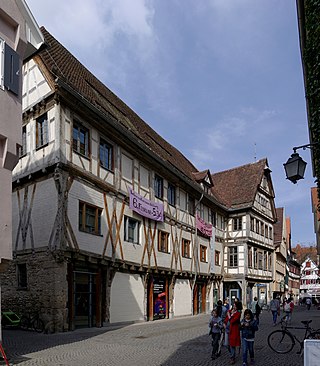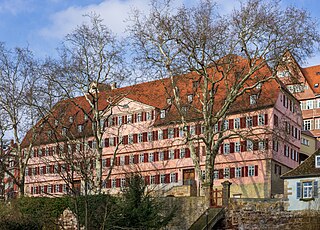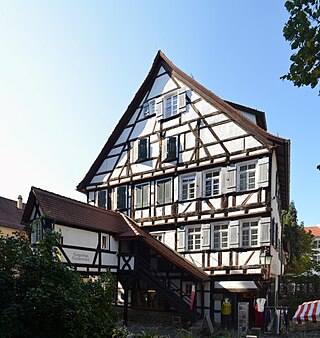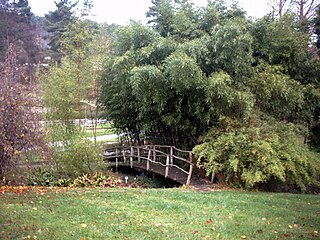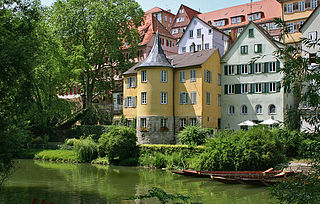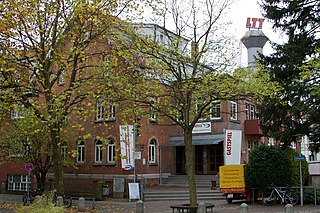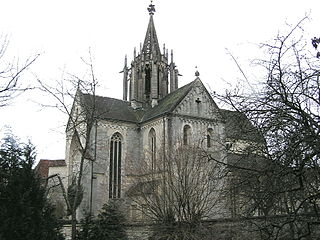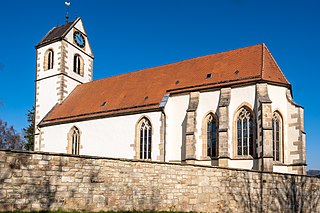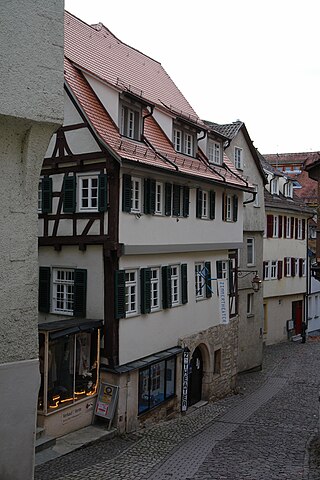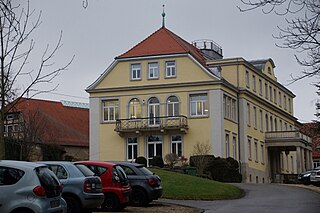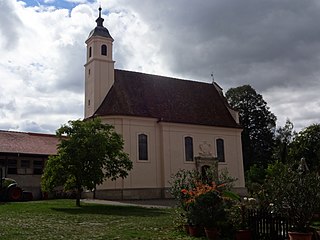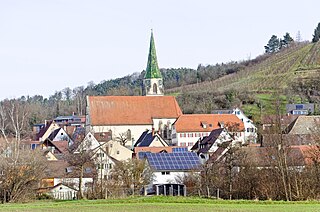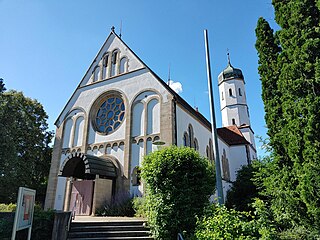20 Sights in Tübingen, Germany (with Map and Images)
Legend
Welcome to your journey through the most beautiful sights in Tübingen, Germany! Whether you want to discover the city's historical treasures or experience its modern highlights, you'll find everything your heart desires here. Be inspired by our selection and plan your unforgettable adventure in Tübingen. Dive into the diversity of this fascinating city and discover everything it has to offer.
Sightseeing Tours in Tübingen1. Kloster Bebenhausen
Bebenhausen Abbey is a former Cistercian monastery complex located in Bebenhausen, Baden-Württemberg, Germany. The complex is also the location of Bebenhausen Palace, a hunting retreat created and maintained by two Kings of Württemberg. The complex was named a historic monument in 1974.
2. Grablege
The Stiftskirche is a church located in Tübingen, Baden-Württemberg, Germany. It is a late Gothic structure built by Peter von Koblenz in 1470. The stained glass windows were designed by Peter Hemmel of Andlau who also designed windows in Ulm, Augsburg, Nuremberg, Munich and Strasbourg. It is the central landmark of Tübingen and, along with the rest of the city, the Stiftskirche was one of the first to convert to Martin Luther's Protestant church. It maintains several "Roman Catholic" features, such as patron saints.
3. Jakobuskirche
The St. James' Church, also known as the Spitalkirche, in Tübingen is a Romanesque church originally dedicated to St. James, which is now used by the Tübingen Protestant St. James parish in the church district of Tübingen. Together with the neighbouring salt barn, it forms the historic centre of Tübingen's lower town, the so-called Gôgei.
4. Bismarckturm Tübingen
The Bismarck Tower is a 16-metre-high observation tower in Tübingen, completed in 1907 as a Bismarck monument, which was built according to the design "Götterdämmerung" by Wilhelm Kreis under the Tübingen government architect Franz Bärtle. The 16 m high Bismarck Tower was built of tuff and coarse-grained sandstone. It stands on the Schlossberg 1.3 km west of Hohentübingen Castle at the end of Lichtenberger Weg. The Bismarck Tower is considered the landmark of Tübingen's Weststadt.
5. Stadtmuseum Tübingen
The Tübingen City Museum, which emerged from "Municipal Collections", is housed in a former granary that is over 500 years old at Kornhausstraße 10 in the old town of Tübingen. The museum houses a permanent exhibition on the history of the city, which gives an overview of the history of Tübingen over the last 600 years, as well as a permanent exhibition on the silhouette artist Lotte Reiniger. In addition, the museum shows several temporary exhibitions a year, each of which is accompanied by an extensive catalogue.
6. Goethehäuschen
The Goethe House in Tübingen is an octagonal garden house located west of the old town and Hohentübingen Castle on the ridge of the Schlossberg, which received its common name after a visit by Goethe during a walk on September 7, 1797. Goethe visited his publisher Johann Friedrich Cotta in Tübingen at the time.
7. Alte Burse / Institut für Philosophie und Kunstgeschichte
The Burse is a building in the south of Tübingen's old town, slightly elevated above the Neckar. The original meaning of the institution can be read in detail in the article Burse. The Tübingen Burse was built between 1478 and 1482. Construction began only one year after the founding of the Eberhard Karls University. A significant part of the founding of the Tübingen Burse is due to the commitment of Eberhard im Bart's mother, Mechthild von der Pfalz. In the central beam of the entrance area of the Burse are carved the palm tree and Eberhard's motto in the beard: "Attempto", which are still the logo of the University of Tübingen today.
8. Nonnenhaus
The nun's house in Tübingen (Baden-Württemberg) is one of the best-preserved beguinages in Germany. Presumably, in 1488 first Dominican nuns, then Beguines, the "nuns", lived in the half-timbered house. With a length of 30 meters, it is one of the largest half-timbered houses in Tübingen's old town.
9. Botanischer Garten
The Botanischer Garten der Universität Tübingen, also known as the Botanischer Garten Tübingen or the Neuer Botanischer Garten Tübingen, is a botanical garden and arboretum maintained by the University of Tübingen. It is located at Hartmeyerstrasse 123, Tübingen, Baden-Württemberg, Germany, and open daily.
10. Hölderlinturm
The Hölderlinturm is a building located in Tübingen, Germany that served as the place of residence and death in the final years of poet Friedrich Hölderlin. He lived there from May 3, 1807 until his death in 1843. The building is located on the Neckar riverfront and is one of the most popularly known sites in Tübingen.
11. Landestheater Tübingen
Landestheater Tübingen is a theatre in Baden-Württemberg, Germany. It is known as 'LTT' for short, officially also 'Landestheater Württemberg-Hohenzollern Tübingen Reutlingen', is a cultural enterprise financed in Tübingen by public funds, donations and entrance fees. It puts on its mainly own productions, but also – partly foreign-language – guest performances. In addition to the so-called "evening game plan", it also has its own children's and youth theater division.
12. Klosterkirche
The former monastery church of the Bebenhausen monastery and today's Protestant parish church is located in Bebenhausen, a district of Tübingen in the district of Tübingen in Baden-Württemberg. It belongs to the Evangelical Church in Württemberg. It is registered as an architectural monument with the Baden-Württemberg State Office for the Preservation of Monuments and was originally the church of the Cistercian Abbey of Bebenhausen.
13. Galluskirche
The Protestant parish church of St. Gallus is located in Derendingen, a district of the university town of Tübingen in the district of Tübingen in Baden-Württemberg. The parish belongs to the church district of Tübingen of the Evangelical Church in Württemberg. It is registered as an architectural monument with the Baden-Württemberg State Office for the Preservation of Monuments.
14. Zimmertheater
Zimmertheater Tübingen is a very small theatre in Tübingen, Baden-Württemberg, Germany in close neighbourhood to the Hölderlinturm, where Friedrich Hölderlin spent his last years in life and near the Neckar river. It opened in 1958 and has two rooms for an audience of 60 and 80 visitors.
15. Schloss Kressbach
Kreßbach Castle in the village of Kreßbach, which belongs to the Tübingen district of Weilheim, is a rectangular building with a hipped roof built in 1766/67 for the Barons of Saint-André. It has a flat entrance risalit and a portico with Tuscan columns in front. The outbuildings date from the 17th and 18th centuries. The castle garden and a rococo fountain from this period have been preserved.
16. St. Andreas
The Roman Catholic Chapel of St. Andreas stands in Ammern, a former hamlet on the Ammer west of the university town of Tübingen in Baden-Württemberg. The chapel belongs to the deanery of Rottenburg of the diocese of Rottenburg-Stuttgart. It is registered as a monument at the Baden-Württemberg State Office for the Preservation of Monuments.
17. Barbarakirche
The Protestant Church of St. Barbara is located in Unterjesingen, a district of Tübingen in the district of Tübingen in Baden-Württemberg. The parish belongs to the church district of Tübingen of the Evangelical Church in Württemberg. The building is registered as an architectural monument with the Baden-Württemberg State Office for the Preservation of Monuments.
18. St. Pankratius
The Roman Catholic parish church of St. Pankratius is located in Bühl, a district of the university town of Tübingen in the district of Tübingen in Baden-Württemberg. The parish belongs to the Diocese of Rottenburg-Stuttgart. The church is registered as a monument with the Baden-Württemberg State Office for the Preservation of Monuments.
19. St. Aegidius
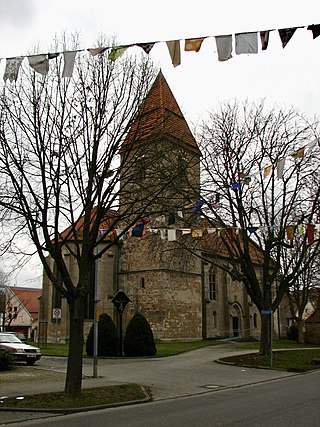
Die römisch-katholische Pfarrkirche St. Ägidius steht in Hirschau, einem Stadtteil der Großen Kreisstadt Tübingen im Landkreis Tübingen von Baden-Württemberg. Die Kirchengemeinde gehört zur Diözese Rottenburg-Stuttgart. Das Bauwerk ist beim Landesamt für Denkmalpflege Baden-Württemberg als Baudenkmal eingetragen.
20. Nikomedeskirche
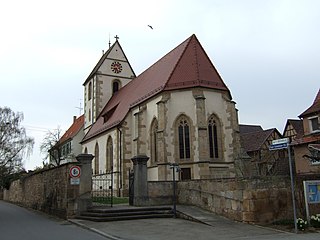
The Protestant Church of St. Nicholas is located in Weilheim, a district of the city of Tübingen in the district of Tübingen in Baden-Württemberg. The parish belongs to the church district of Tübingen of the Evangelical Church in Württemberg. The building is registered as an architectural monument with the Baden-Württemberg State Office for the Preservation of Monuments.
Share
How likely are you to recommend us?
Disclaimer Please be aware of your surroundings and do not enter private property. We are not liable for any damages that occur during the tours.
